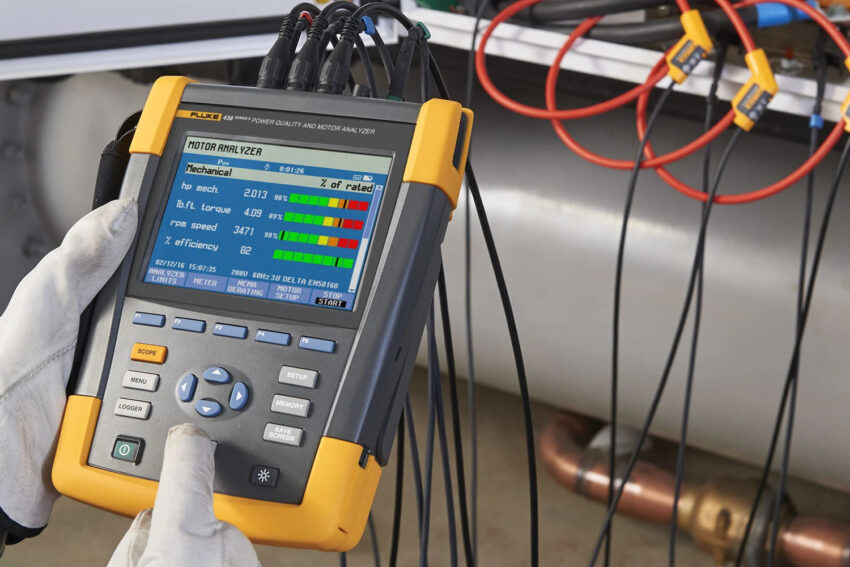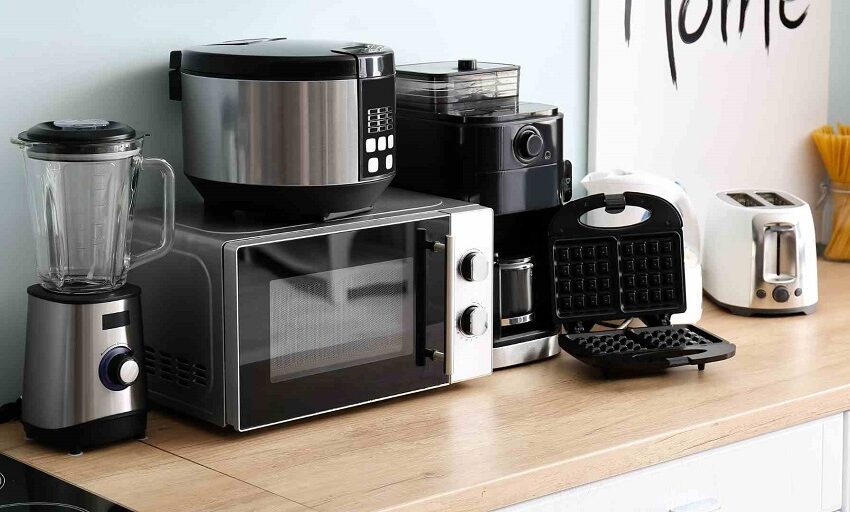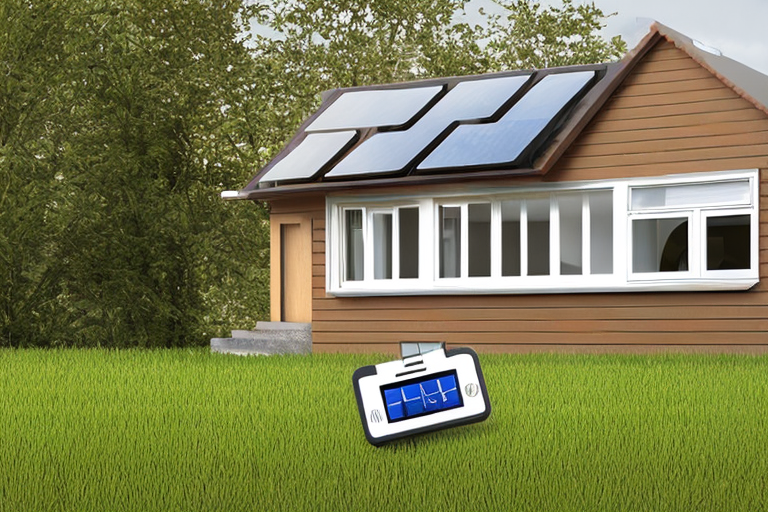Energy monitoring devices are a pretty recent invention, and their use is constantly expanding. They continue to evolve with time, and new devices are popping up every now and then. In this blog, we will talk about energy monitoring devices, what they are, how they can help you save money and some tips and tricks that you can use to maximize your savings.
What is a Whole-Home Energy Monitor?

A whole-home energy monitor is a device that tracks and measures energy usage throughout an entire home. It’s a smart investment for busy homeowners who want to monitor their energy use and reduce costs.
Home energy monitors function much like the energy-monitoring features on individual devices, such as air conditioners, refrigerators, electric water heaters, and washing machines. They connect to a home’s electrical panel and detect the unique energy signature of each device on a circuit. Home energy monitors can give detailed insights into energy consumption and cost in real time when connected to Wi-HFi.
Home power monitors are a good choice for home energy monitoring when wanting to monitor an entire home’s energy use, rather than just individual appliances. They provide a comprehensive view of electricity use, allowing homeowners to make informed decisions about how to improve their homes’ sustainability.
Home energy monitors are also known as home electricity monitors, consumption monitors, or power monitors. They’re an easy way for households to track their usage and savings without having to use additional tools or spend money on a monitor.
Benefits of a Whole-Home Energy Monitor
– Whole-home energy monitors monitor energy usage beyond the meter, allowing for detailed data on the power consumption performance of all appliances in a home.
– Specifically, a monitor can help identify energy-consume devices, such as TVs and computers, and monitor energy usage over time to identify any issues with appliance usage or energy efficiency. This can allow for quick and easy adjustments to optimize appliance usage.
– With a monitor, consumers can track their energy usage more closely and make more informed decisions about their home’s energy consumption.
– In addition, whole-house monitors use sensors to detect the energy signature of individual devices as they turn on and off. This allows the monitor to monitor energy usage without requiring manual adjustments from the consumer.
– Energy monitors can provide insights through a connected smartphone app or email report. They enable consumers to view real-time energy usage and access historical data for analysis and trend identification.
– Overall, whole-house monitors are a great way to monitor energy consumption across an entire home and make smart energy decisions that benefit the environment and finances.
Whole-house energy monitors are recommended for those wanting to monitor all appliances and large appliances like washers and dryers. Individual appliance energy monitors are better for targeting specific devices like smart televisions and computers.
Strategies You Can Use to Save Money Without an Energy Monitor
Depending on your energy use, savings can be easy or difficult to achieve. But there are a number of smart energy-saving practices you can adopt to save money and reduce energy consumption. Some of the most important ones include:
– Getting a Whole-Home Energy Monitor. These devices monitor energy use in real-time and help households identify budget-friendly energy-efficient practices, such as switching off electric lights and appliances when not in use. Moreover, they monitor power consumption and provide alerts when a home is consuming more electricity than it is generating. These devices can also help households understand the amount of energy their home is using and how much energy they are spending.
– Taking Advantage of Solar Power. With solar panels becoming more affordable, households can now save on electricity bills by generating their own solar power. This involves installing solar panels on rooftops or windows to generate electricity. It is vital that households understand the basics of solar power and monitor the effectiveness of their solar power system to get optimum savings.
– Driving Electric Cars or Bicycles. With electric cars becoming popular, households can also save money by opting for electric vehicles instead of conventional gasoline-powered ones. Apart from cutting down their carbon footprint, electric cars offer better driving experiences compared to conventional vehicles, making them a cost-effective alternative for many consumers.
– Using Time-of-Use Rates or Scheduled Restarting Of Appliances at Nighttime When Energy Prices Are Lowest. By taking advantage of time-of-use rates or scheduled restarting of appliances at night when energy prices are lowest, families can save money on electricity bills over time.
– Avoiding Unnecessary Loads in Homes Besides Turning Down Lights and Appliances When Not in Use and Using Weather
Tips for Maximizing Your Savings
One way to maximize savings is to install a whole-home energy monitor. This device monitors energy usage in your home and can alert you when it’s time to replace an old appliance or make other energy-conscious decisions. By tracking your energy consumption, you can identify areas for potential savings, such as turning off lights or appliances when not in use. These tips can help you save money on your energy bill without sacrificing the comfort and convenience of home ownership.
Another way to save money is to use solar power and time-of-use rates. When energy is expensive, switching to solar power can help you save money on electricity. Additionally, by intelligently tracking energy usage, solar panels can produce more energy than they would under standard time-of-use rates. Finally, customers have reported saving between 7-10% annually on energy bills after the installation of a whole-home energy monitor. Though it requires some effort and planning, these tips can help you save money and emissions while also improving your home’s energy efficiency.
Alternatives to Whole-Home Energy Monitors
– Overall, there are a few factors to consider when deciding on a whole-home energy monitor. The most important factors are cost and convenience. Whole-home energy monitors are much more expensive than individual appliance energy monitors, but they’re easier to use and provide a more comprehensive picture of energy consumption in your home. This is because they monitor the energy consumption of all appliances in a home at once, rather than individual appliances.
– Another consideration is the level of detail the monitor provides. Whole-home energy monitors provide detailed information about appliance usage, such as how long a given appliance was on or how much energy it consumed during a specific time period. However, individual appliance energy monitors may also provide a similar level of detail, depending on the model.
– Finally, consider the types of devices you plan to monitor with the monitor. Individual appliance energy monitors are designed to monitor small appliances like electric toothbrushes and smartwatches, whereas whole-home energy monitors can monitor larger devices like refrigerators and washing machines
Conclusion
There are a number of energy monitoring devices that monitor home energy usage and can help you save money. While they vary in functionality and price, one thing is for sure- they can all help you monitor your home energy usage and use it to help you save money. They also allow you to adjust your home settings to optimize energy efficiency and savings. If you would like to learn more about other ways to monitor home energy usage or comment below, we’re here to help!








